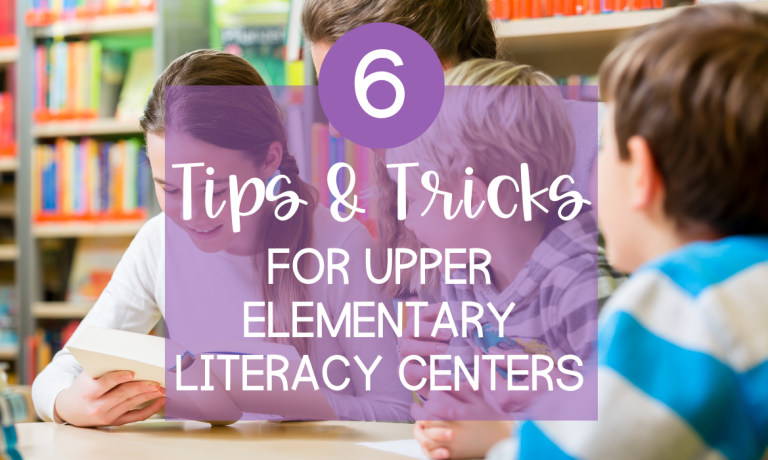Upper elementary literacy centers are a powerful way to promote student engagement and learning. These centers provide opportunities for students to practice essential reading and writing skills in a fun and interactive manner. However, teachers must design and manage literacy centers thoughtfully to ensure that they are truly effective. In this blog post, we will explore six essential tips and tricks for creating successful upper elementary literacy centers that foster student growth and enthusiasm for learning.
Tip 1: Designing Engaging and Purposeful Upper Elementary Literacy Centers
The key to successful literacy centers lies in their design. Start by identifying clear learning objectives and goals for each center. What specific skills do you want your students to practice and master? Having a well-defined purpose for each center ensures that students engage in meaningful activities contributing to their overall literacy development.
Consider incorporating various activities to cater to different learning styles and preferences. From hands-on projects to creative writing exercises, offering diverse activities will keep students interested and motivated to participate. Moreover, integrating real-world connections and themes can make the centers more relevant and relatable to your students’ lives.
Tip 2: Creating a Well-Organized Center Rotations System
To make literacy centers run smoothly, establish a clear schedule for rotations. Students should know where to go and what to do during each center without confusion. Grouping students effectively is another critical aspect. Consider their abilities and needs to create balanced and purposeful groups. Furthermore, implement a rotation management system that ensures efficient transitions between centers. This may involve using timers or signals to indicate when it’s time to switch, allowing everyone to stay on track.
Tip 3: Utilizing Technology in Upper Elementary Literacy Centers
Incorporating technology can enhance literacy centers by providing interactive and engaging learning opportunities. Introduce educational apps, digital reading resources, and online writing platforms to allow students to explore literacy in a modern context. However, balancing technology use and traditional reading and writing activities is essential. Ensure that technology supports the learning objectives of each center and doesn’t overshadow the importance of physical books and handwriting.
Tip 4: Differentiating Instruction to Meet Individual Needs
Every student learns differently, and literacy centers offer an excellent opportunity to address individual needs. Adapt your literacy center activities to accommodate diverse learners, providing extra support or challenges as necessary. Allow for independent work, small group collaboration, and one-on-one instruction with the teacher to cater to varying learning preferences. Regularly assess student progress through formative assessments to adjust instruction accordingly.
Tip 5: Encouraging Collaboration and Peer Interaction
Creating a positive and supportive learning environment is crucial for successful upper elementary literacy centers. Encourage students to work together, collaborate, and share ideas during center activities. Implement cooperative activities that promote teamwork and communication skills. As students interact with their peers, they learn from each other and develop essential social and communication competencies alongside their literacy skills.
Tip 6: Assessment and Reflection in Literacy Centers
Assessment is a vital component of any successful educational endeavor. Utilize various assessment strategies to gauge students’ progress in literacy centers. Alongside teacher evaluations, please encourage students to self-assess their performance and set personal goals for improvement. Additionally, regularly evaluate the effectiveness of your literacy centers and be open to making adjustments based on student needs and feedback.
Upper elementary literacy centers can be transformative in fostering a love for reading and writing while nurturing students’ literacy skills. By following these six tips and tricks, teachers can create engaging, purposeful, and efficient literacy centers that lead to meaningful learning experiences for their students. Embrace the power of literacy centers to elevate your classroom instruction and set your students on a path of continuous growth and success in their literacy journey.
